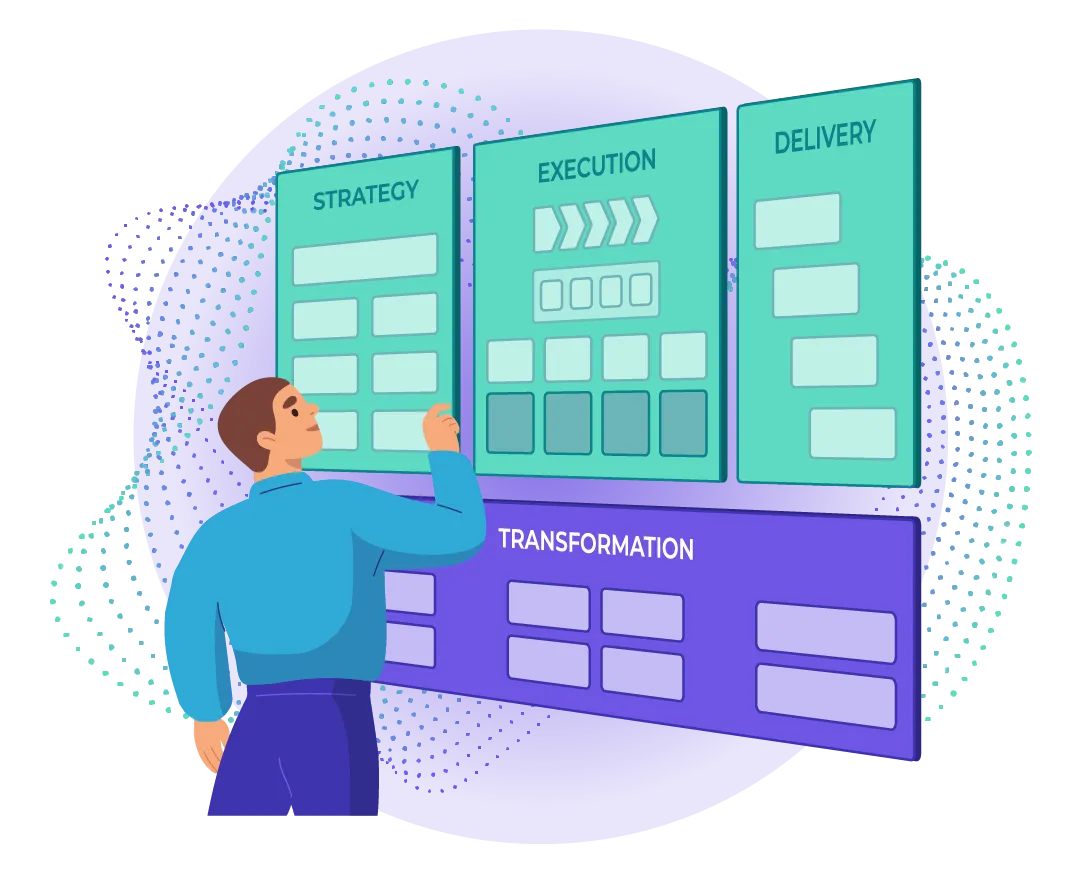A technology roadmap lays out the direction that an organization plans to develop their technological abilities, or application & software needs, with the aim of aligning technology changes with business strategy.
Introduction
In an era of digital uncertainty, being able to map out your technological needs is vital for informing and guiding decision making. Roadmaps communicate and influence change, earning buy-in from key stakeholders and providing a plan of action to achieve particular goals, or in this case, implement new applications and technology solutions.
What is a Technology Roadmap
A technology roadmap is essentially a plan for the future of a firm’s technology initiatives. As the name implies, a roadmap is a visual document that is intended to demonstrate what a business plans to do, how they will achieve it and on what timescale. Roadmaps can be used in other business areas, with Gartner suggesting there are four main categories. As well as technology roadmaps, they found project roadmaps, capability roadmaps, and scenario roadmaps. Within those categories are likely to be further options, such as Application roadmaps as a subset of technology.
Though roadmaps attempt to bridge the gap between the present and the future, there is an inherent unpredictability to technology. Longer timelines will introduce more variability into outcomes, as technologies advance and consumer needs change. In the short term, a technology roadmap could lay out a change as simple as integrating a new tool in a production line, while a very long term roadmap might speculate on the use of artificial intelligence and robotics.
The Challenges for Making a Technology Roadmap
There are a number of common issues that a firm can face when attempting to plan out a technology roadmap:
- Having accurate data is crucial, as high quality roadmaps depend heavily on knowing data such as technology lifecycles and projected replacements.
- Complexity can be a big issue in modern enterprises, as there is simply a vast array of technology in use. This makes it highly labor intensive to map the current state of the enterprise, and as with any map, you won’t get very far if you don’t know where you are to begin with.
- The target state for a technology or application roadmap will often be unclear, which makes it impossible to move forward. Establishing the target state can take a significant investment of resources.
- As already mentioned, the longer the scale of the roadmap, the harder it becomes to accurately plan for technological change. This can become particularly problematic if radical innovations occur, as these events require a far more flexible approach than is typical.
How to Create a Technology Roadmap
In order to create a formal, effective technology roadmap, an organization will most likely need to use technology, whether through a simple application like Microsoft’s Visio or a fully featured program such as iServer.
Nonetheless, there are aspects of the process that will be common to all implementations. In general, an enterprise will go through three phases as they develop a technology roadmap. The first is all about preparation. This means assigning responsibility and determining goals, as well as working on gathering the necessary data.
Next is the actual creation of the roadmap, where the organization will create the physical document. In this stage, an organization needs to decide on factors such as the target state for their technology or application systems. This stage may also include the execution of parts of a roadmap, depending on its scale.
Finally, businesses need to look back over the exercise and update or evaluate where necessary. Many roadmaps will require changes during their lives, while enterprise architects and others involved in the process will want to review what improvements can be made to future attempts.
This is of course hugely simplified and does not encompass many parts of a technology roadmap implementation. For a more practical guide, we have demonstrated a simple roadmap made using iServer below.
Making a Technology Roadmap in iServer 365:
Summary
Creating an application or technology roadmap is a great way to bring disparate stakeholders onto the same page for driving digital transformation. However, the creation of a technology roadmap can be challenging and there are a wide range of factors for organizations to consider before starting. This initial guide has hopefully illuminated some of these factors, though there is still a range of topics that we have not covered here. Orbus have gone into more detail about technology roadmapping at this page. A roadmap starter pack is available here, and you’ll find more help available in our Resources section.







